Oil
- Crude oil is clearly rebounding. In the case of WTI crude, this is a rebound from a low of $65 per barrel to a level of $70 per barrel. The next important resistance level is around $71.5 per barrel, the local lows of early and late August
- The EIA is cutting its forecast for WTI crude oil to 78.8 for 2024, down $1.41 from its previous forecast. For 2025, on the other hand, EIA is pointing to a price of $79.53 per barrel, a $1.58 cut from its forecast.
- EIA expects inventories to shrink by an average of 0.9 million brk per day in the third quarter of this year, and by 1.0 million brk per day in the fourth quarter. EIA expected a reduction in inventories, even before OPEC+'s decision to delay a production hike
- According to EIA estimates, Libya's production has fallen to around 0.4 million brk per day, down from an average of 1.1 million brk per day in the first half of this year
- EIA indicates that oil production will reach 13.3 million brk per day by the end of the year, rising to 13.7 million brk per day next year
- The EIA is also raising its demand forecast for this year by 180 kbd to 103.08 million brk per day, while next year it is raising it by 100 kbd to 104.6 million brk per day
- Net speculative positions on Brent crude oil futures fell to negative levels for the first time since the data was published in 2011
- Crude oil inventories have essentially stopped falling, consistent with seasonality. This could now cause potential signals of weakness if inventories grow stronger than last year or the 5-year seasonality
- It is worth noting that we had a short-term oversold signal on oil, which was associated with a price drop below 2 times the standard deviation of the 1-year average. In contrast, oil is currently priced in line with the 5-year average. There have been no recent signals, but there were multiple bounces in 2011-2013
- We are again seeing a clear increase in backwardation, which is already over $1 in the case of WTI. In the case of Brent crude we do not see such a strong increase in backwardation
- The crack spread for WTI oil continues to fall, while WTI crude is rebounding. If oil inventories continue to fall, then the crack spread should rebound. On the other hand, this could signal a premature rebound for WTI oil. Such a large crack spread is also related to the rollover that will take place after today's session.
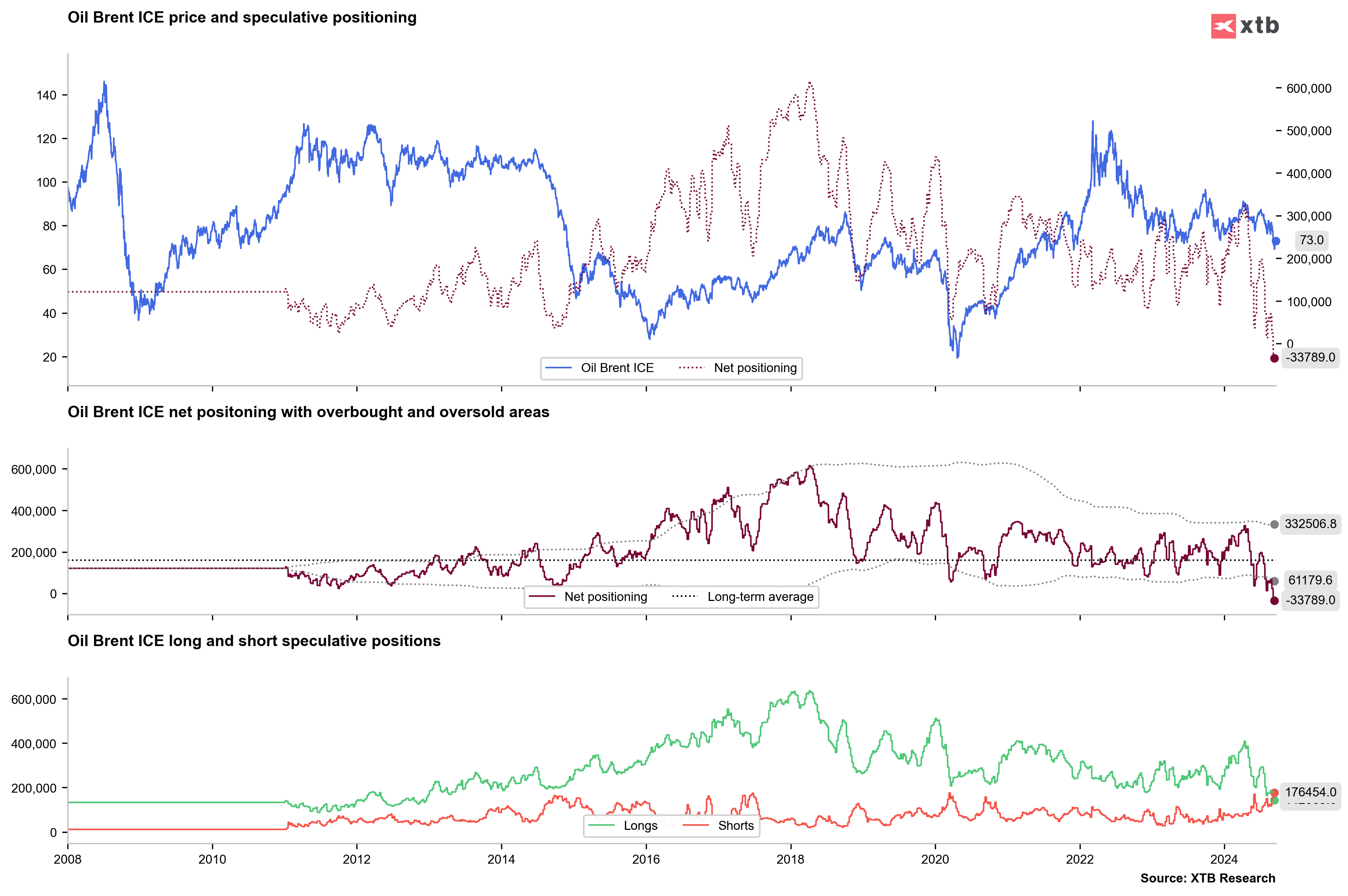
Positions on Brent Crude became negative for the first time since 2011. Source: Bloomberg Finance LP, XTB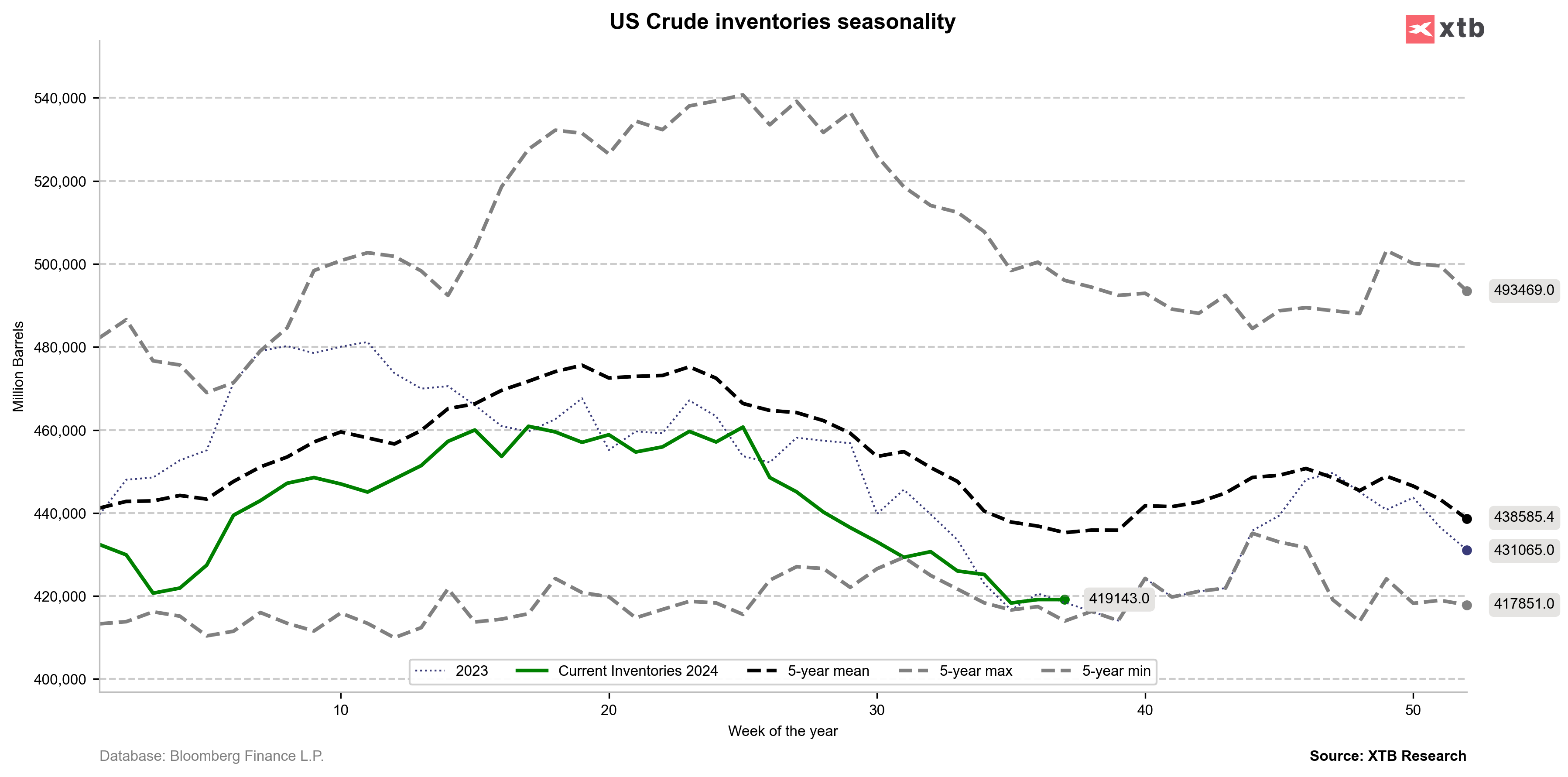
เริ่มเทรดทันทีวันนี้ หรือ ลองใช้บัญชีทดลองแบบไร้ความเสี่ยง
เปิดบัญชีจริง ลองเดโม่ ดาวน์โหลดแอปมือถือ ดาวน์โหลดแอปมือถือCrude oil inventories are currently at a 5-year low. The current behavior relative to averages and levels from a year ago will be important. Source: Bloomberg Finance LP, XTB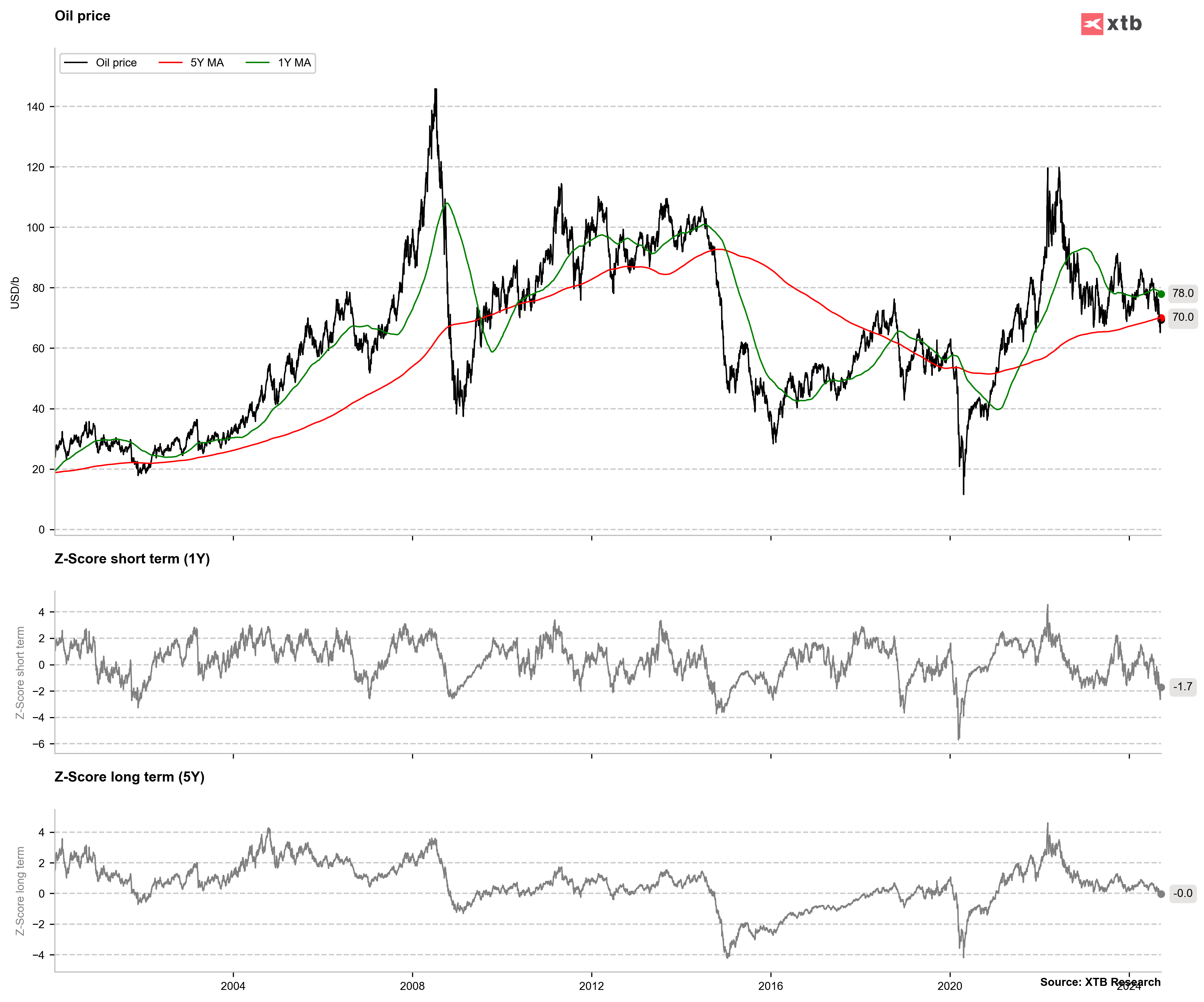 In oil, we had a short-term oversold signal, based on the deviation from the 1-year average. We also have such signals, looking at the 5-year average and price behavior from 2011-2013. Source: Bloomberg Finance LP, XTB
In oil, we had a short-term oversold signal, based on the deviation from the 1-year average. We also have such signals, looking at the 5-year average and price behavior from 2011-2013. Source: Bloomberg Finance LP, XTB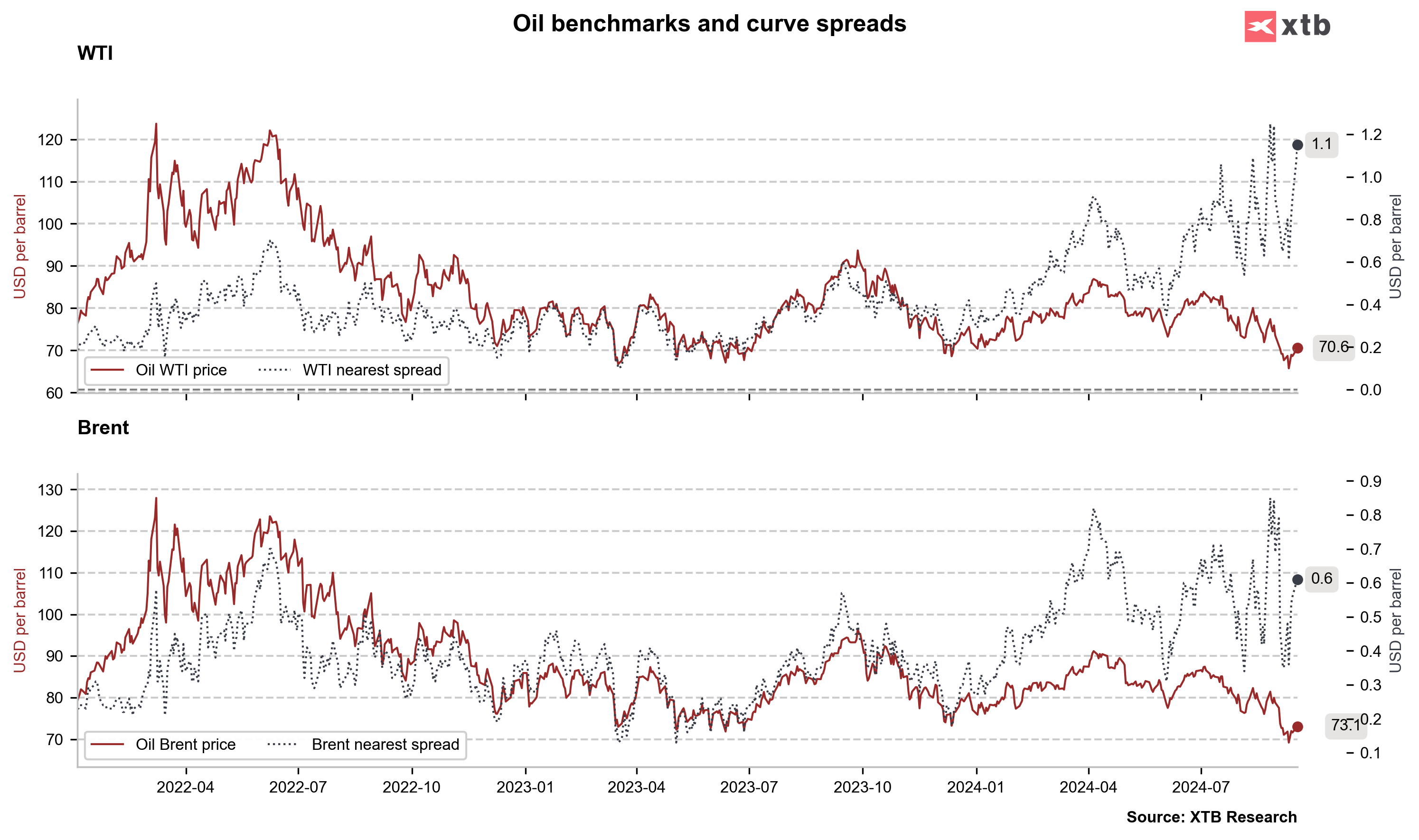
We see a clear increase in backwardation for WTI crude oil, which again may suggest a short-term overbought condition. At the same time, however, it is worth remembering that this occured just before the contracts' rollover. Nevertheless, the futures curve remains in extreme backwardation through January. Source: Bloomberg Finance LP, XTB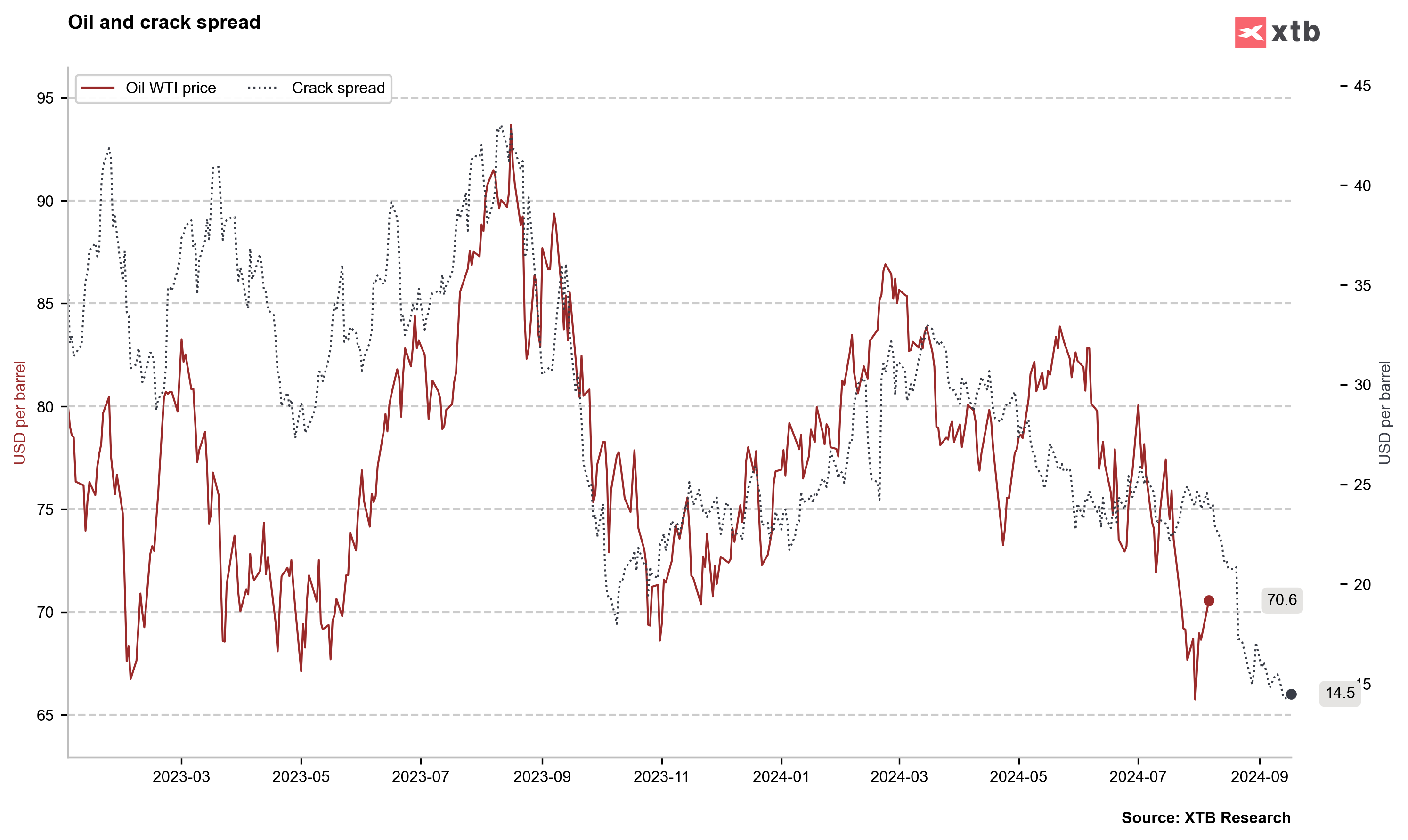
The crack spread does not justify a rebound in WTI oil prices. Nevertheless, the behavior of oil inventories may also lead to a crack spread rebound itself. Source: Bloomberg Finance LP, XTB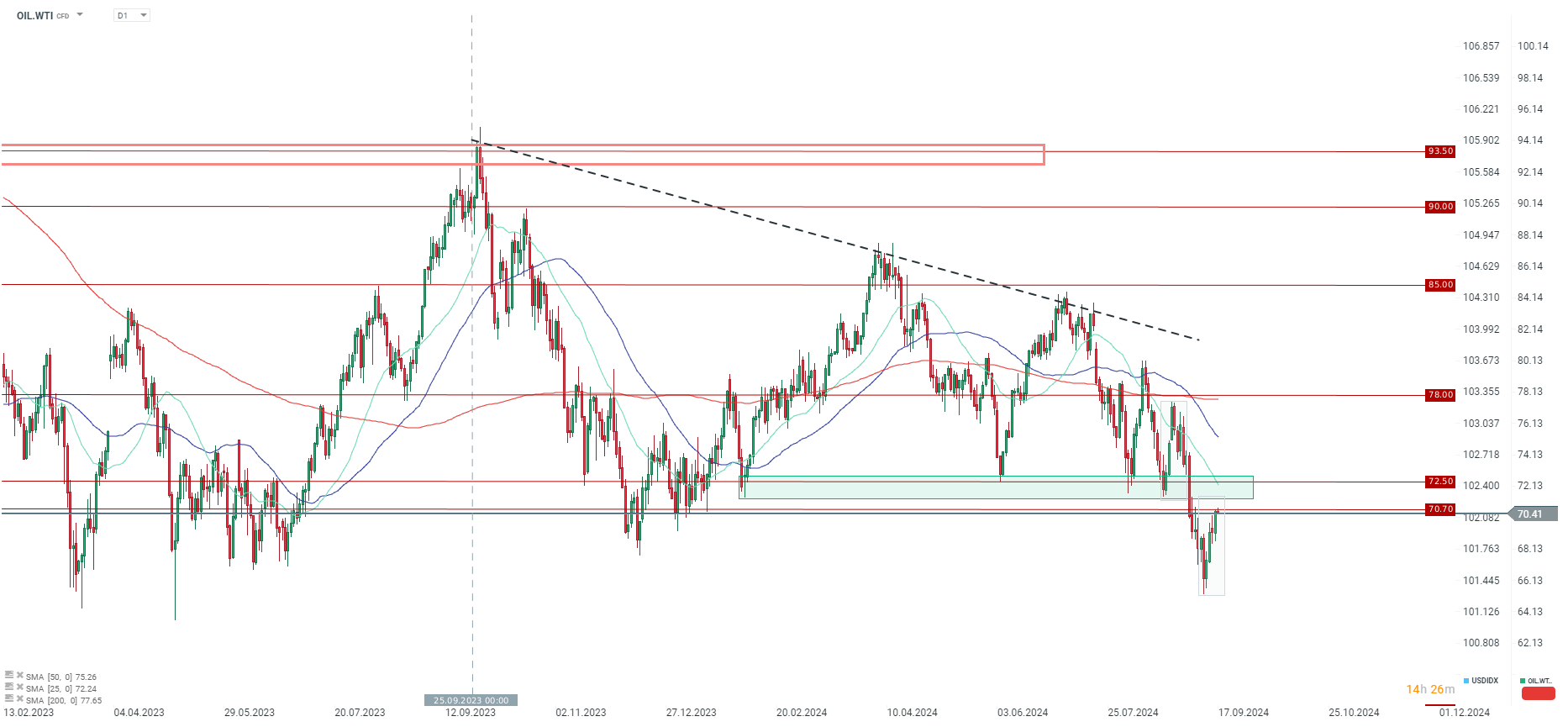
We are seeing a lot of mixed signals for WTI and Brent Crude Oil. Nevertheless, the current behavior of the WTI oil price may suggest an attempt to rebound to the $71.5 per barrel level. A rise above this level would indicate a possible breakout from the downtrend. Source: xStation5
NATGAS
- Storage fill in Europe is above the 93% level. This indicates a high level of safety ahead of the heating season
- US inventories are about 10% above the 5-year average, but are already below the 5-year peak.
- The relatively low growth of gas inventories in recent weeks means that it will be possible to hit the 5-year average before the heating season begins.
- Inventories currently stand at 3387 bcf, while the 5-year seasonal peak is around 3700 bcf
- Comparative inventories suggest that gas prices should now be higher. However, this will also be driven by the term structure of gas itself. Gas prices in January should be at $3.3/MMBTU, based on the current spot price
- Currently, gas consumption remains above standard. On the other hand, gas production is clearly below local peaks from this year, resulting in lower inventory increases than standard
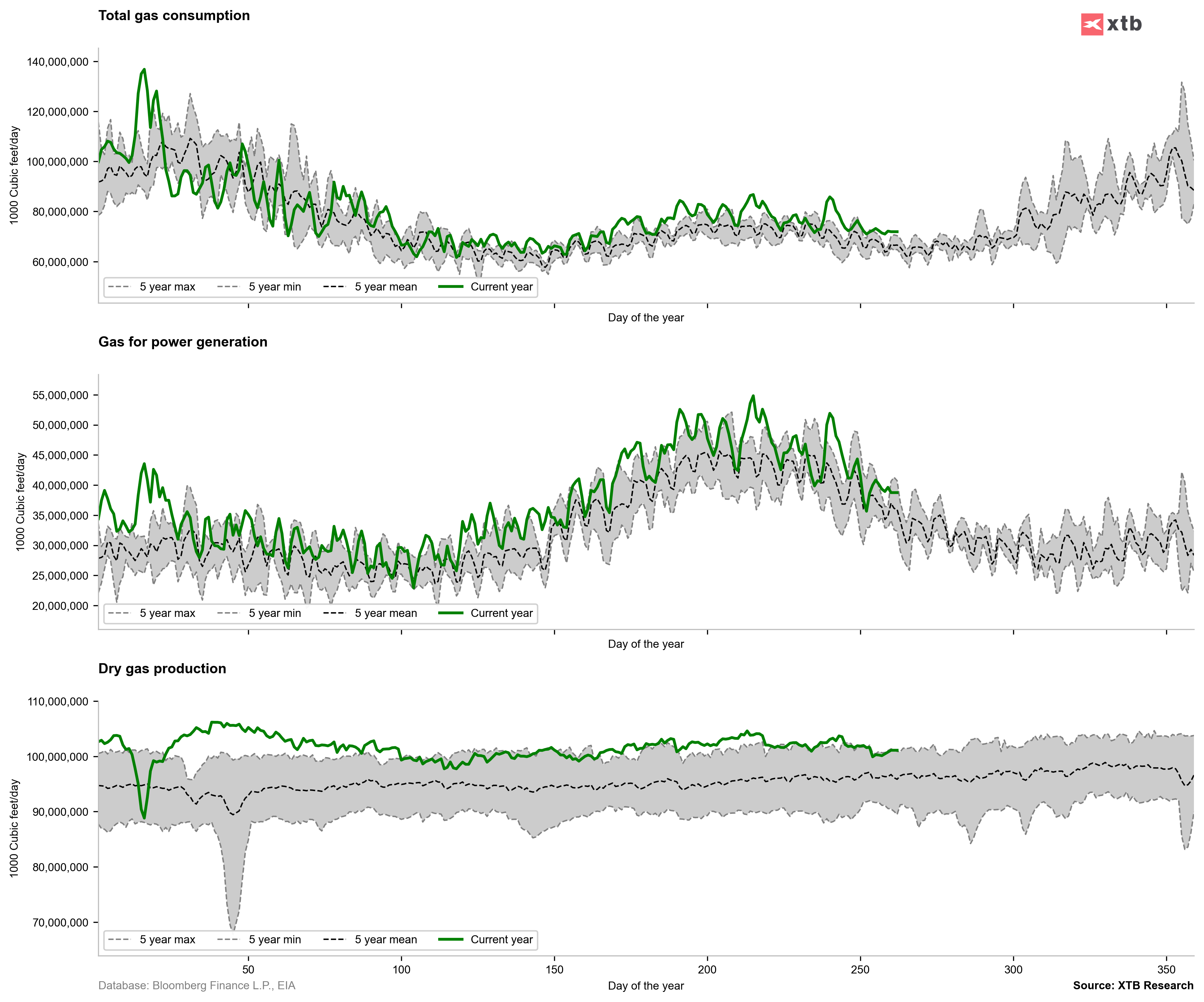
Gas consumption is higher than standard. Source: Bloomberg Finance LP, XTB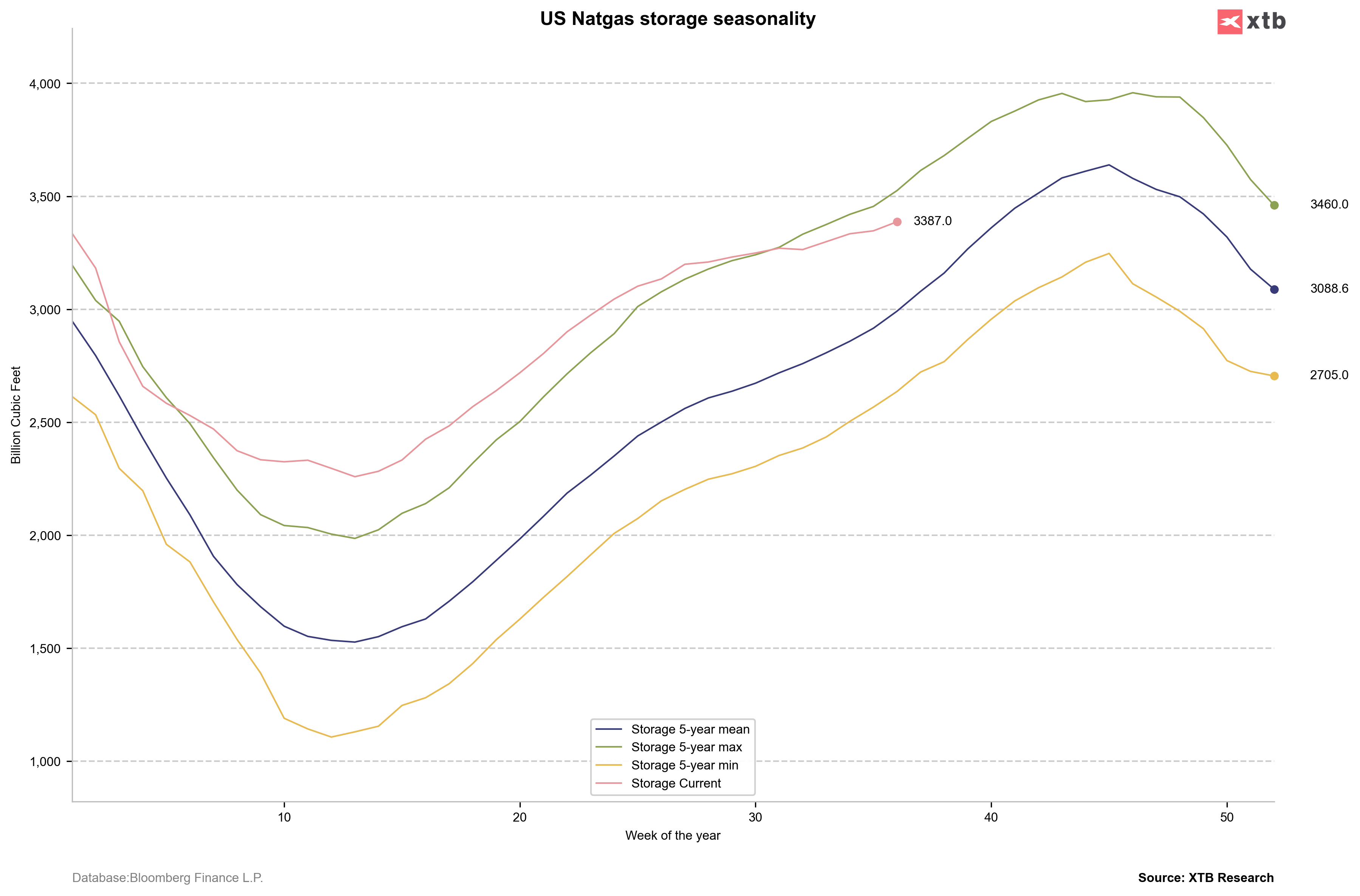
Gas inventories are growing slightly slower than the average, due to higher consumption and lower production. Source: Bloomberg Finance LP, XTB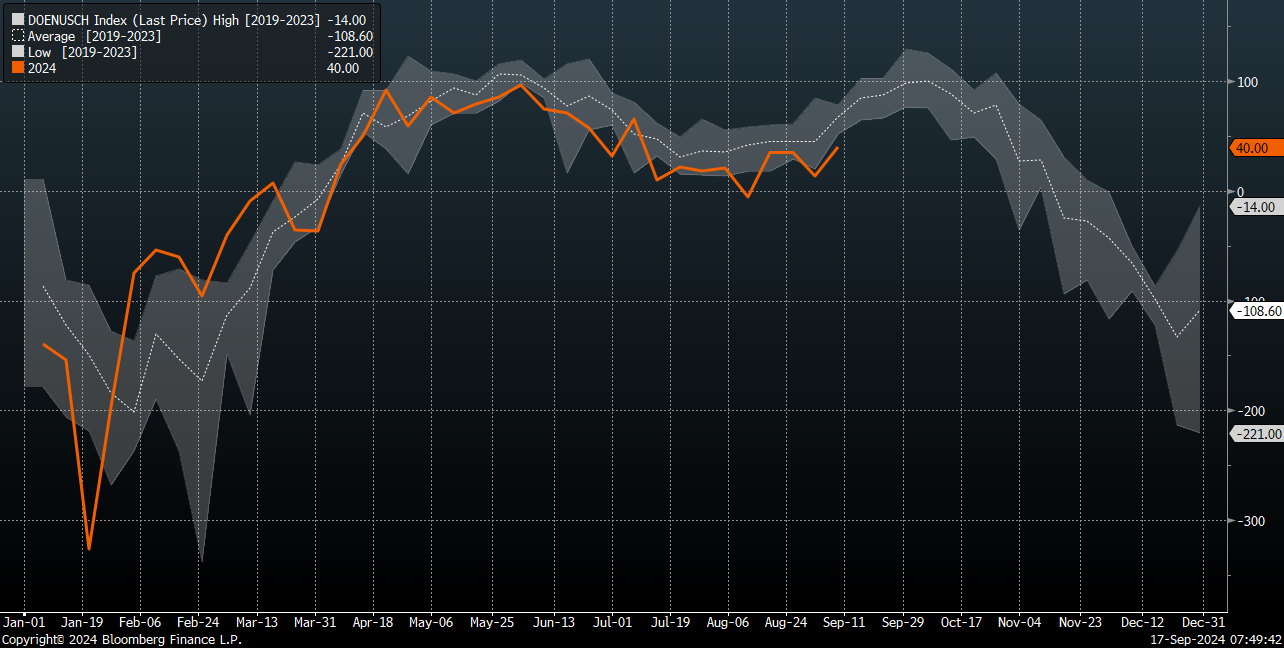
Increases in gas inventories in recent weeks have been noticeably lower than seasonality would suggest. This suggests that upward pressure on gas prices should continue. Source: Bloomberg Finance LP, XTB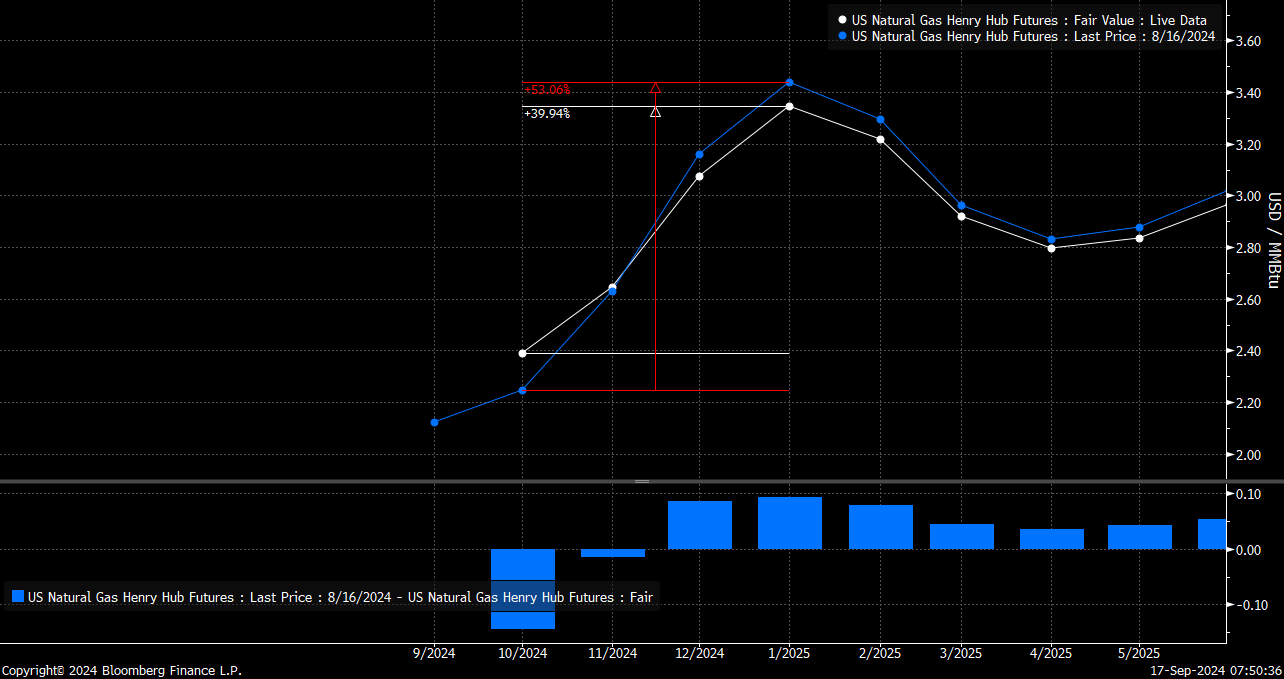 Contango from the perspective of the October and January contracts has declined 13% on a monthly basis. Today, after the session, we are facing a rollover from the October contract to the November contract. This rollover will be about 10% and will lead to a price near $2.65/MMBTU. Source: Bloomberg Finance LP, XTB
Contango from the perspective of the October and January contracts has declined 13% on a monthly basis. Today, after the session, we are facing a rollover from the October contract to the November contract. This rollover will be about 10% and will lead to a price near $2.65/MMBTU. Source: Bloomberg Finance LP, XTB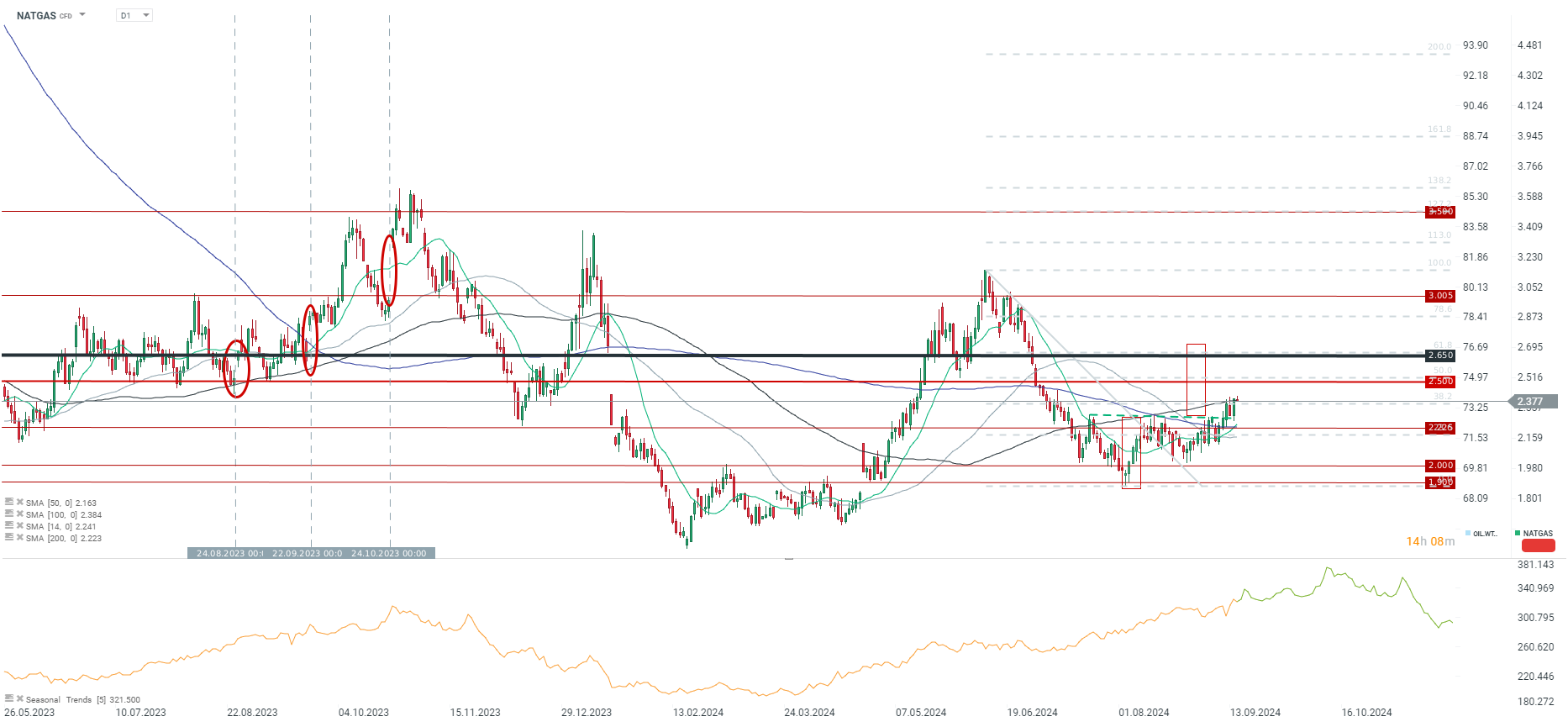 Gas is currently testing the 100-period average. Of course, it is worth keeping in mind the rollover, which will take place today after the session and will be around 10%. The spike will likely lead to a test of the range of the oRGR formation. Another thing worth noting is the massive gap. Last year, the September gap was not closed until December, while the October gap was not closed until November. Source: xStation5
Gas is currently testing the 100-period average. Of course, it is worth keeping in mind the rollover, which will take place today after the session and will be around 10%. The spike will likely lead to a test of the range of the oRGR formation. Another thing worth noting is the massive gap. Last year, the September gap was not closed until December, while the October gap was not closed until November. Source: xStation5
GOLD
- Gold resists seasonality and gains strongly just ahead of the Fed's interest rate decision; precious metal tests the vicinity of $2585 per ounce
- Gold's maximum momentum over the past 5 years suggests consolidation in the next 2 months. Average behavior indicates that a potential bottom may be near
- On the other hand, gold behaves more like a long-term seasonality, instead of a 5 or 10-year seasonality. It is worth mentioning that in the last 5-10 years we have had only one cycle of interest rate cuts
- Gold's behavior after the first cut in the few sessions after is difficult to read, but in the longer term gold usually gains after the first cut
- However, it is worth noting that in recent times gold has not always behaved in a standard way
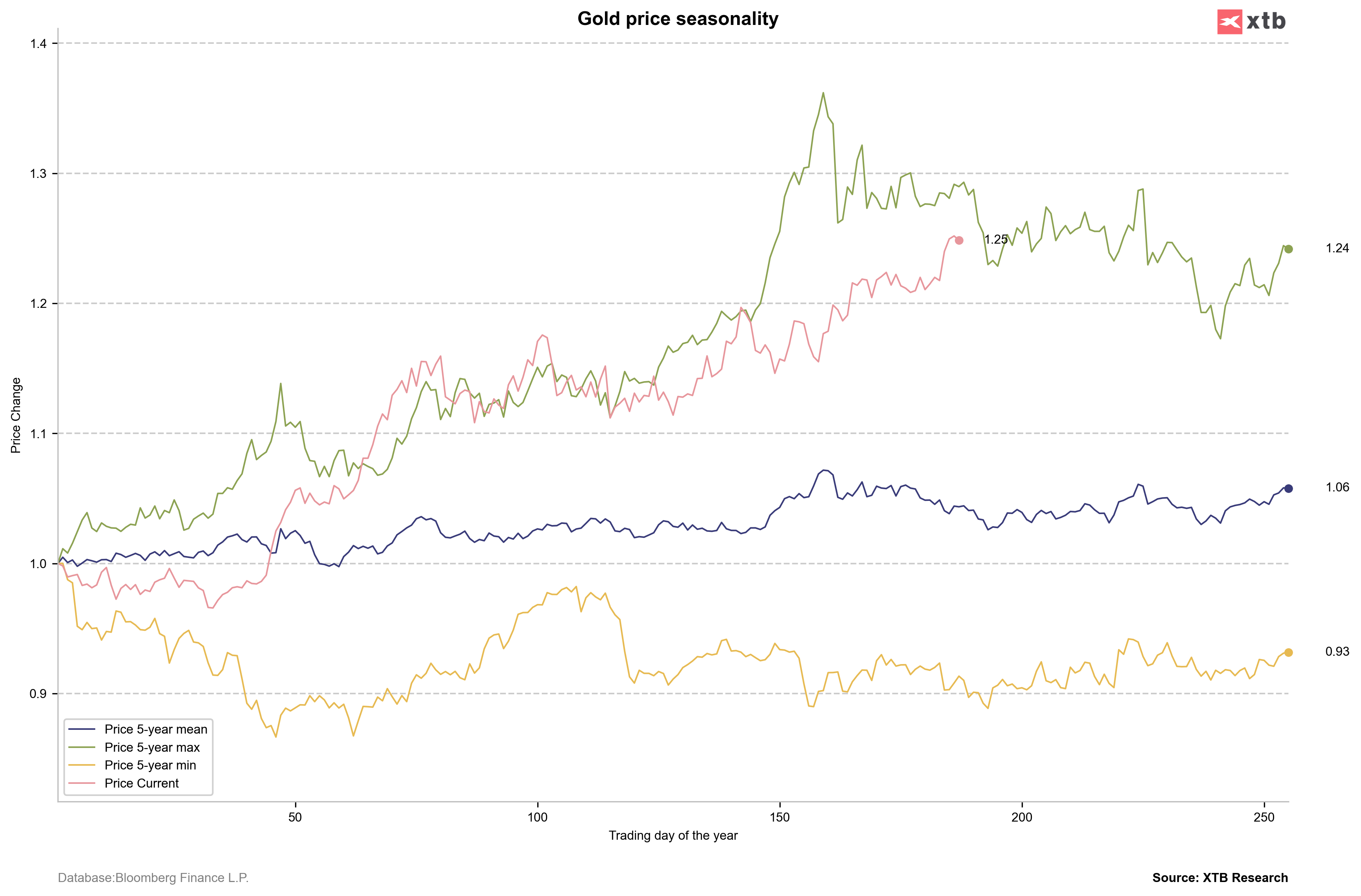 According to the 5-year seasonality, gold is near a potential average bottom, while the maximum behavior of the last 5 years suggests consolidation. Source: xStation5
According to the 5-year seasonality, gold is near a potential average bottom, while the maximum behavior of the last 5 years suggests consolidation. Source: xStation5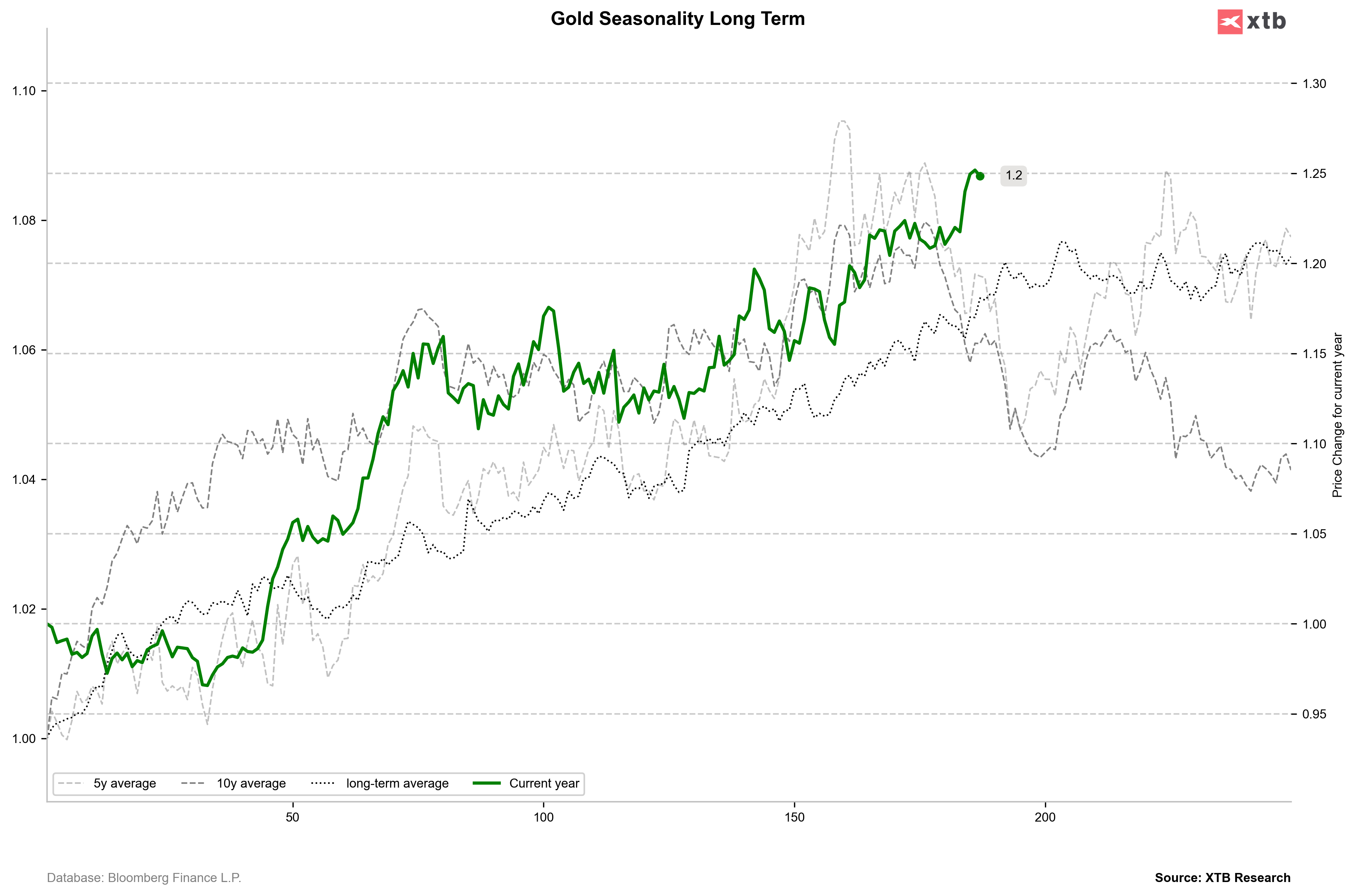 The 5-year average seasonality suggests a bottom in the near term. The 10-year seasonality suggests a bottom may not occur until 4-6 weeks from now. In contrast, gold's current behavior more closely resembles the average behavior of the past few decades (since the release of gold prices). If gold were to behave similarly, then the local peak would be in early November. This coincides with the US presidential election. Source: Bloomberg Finance LP, XTB
The 5-year average seasonality suggests a bottom in the near term. The 10-year seasonality suggests a bottom may not occur until 4-6 weeks from now. In contrast, gold's current behavior more closely resembles the average behavior of the past few decades (since the release of gold prices). If gold were to behave similarly, then the local peak would be in early November. This coincides with the US presidential election. Source: Bloomberg Finance LP, XTB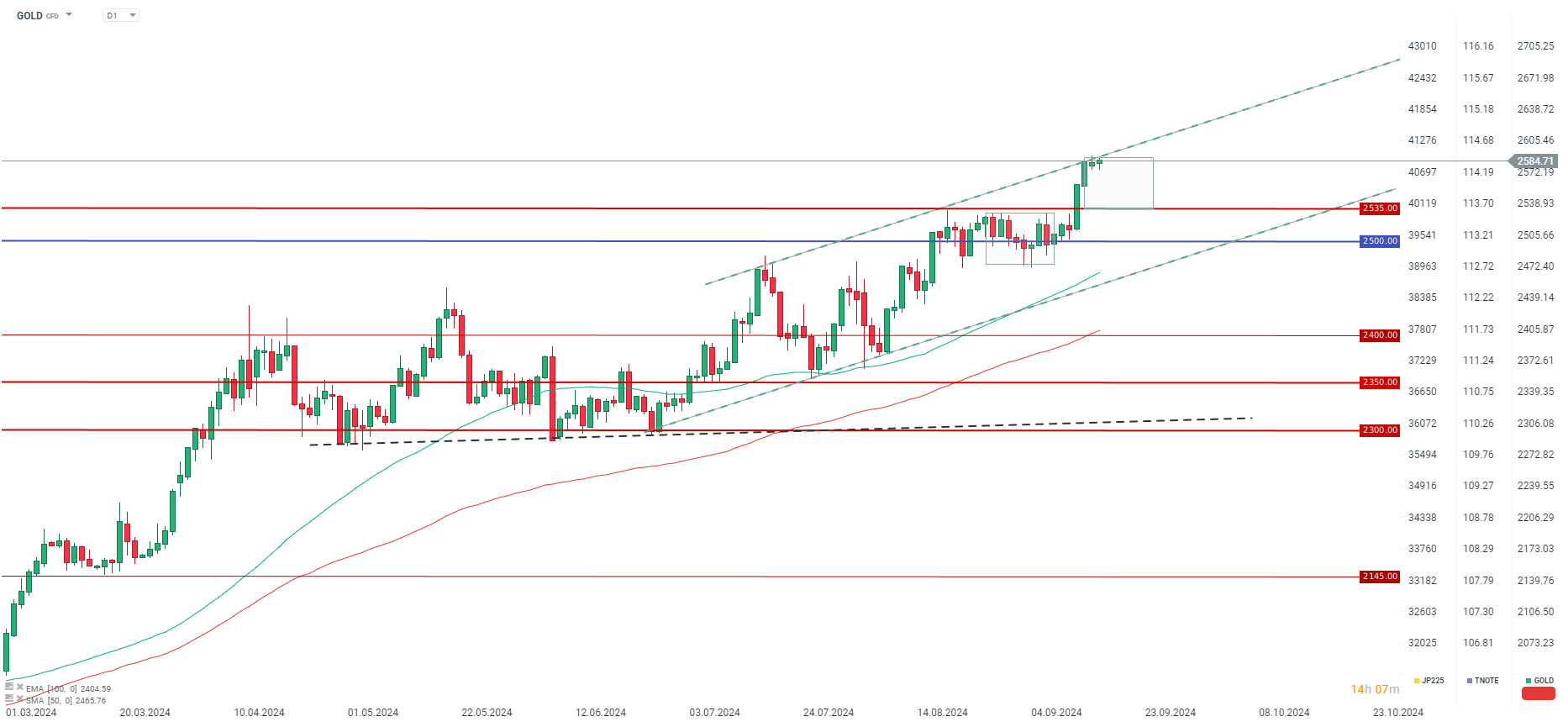 Gold is currently testing an important place in the form of the upper limit of the upward trend channel. If the test was the start of a correction, an important place of support could be around $2535 per ounce. Source: xStation5
Gold is currently testing an important place in the form of the upper limit of the upward trend channel. If the test was the start of a correction, an important place of support could be around $2535 per ounce. Source: xStation5
Coffee
- Recent coffee price increases are again triggered by weather concerns
- The price of Robusta hit its highest level since 2008, when coffee contracts began trading. Arabica, on the other hand, hit 260 cents per pound, breaking through recent local peaks and marking the highest prices since 2011.
- The price of Robusta has risen by more than 90% this year, which is attributed to a strong shortage of this coffee. Arabica price growth has been about 40% this year.
- Brazil is currently experiencing one of the worst droughts in recent years, creating considerable uncertainty about next year's coffee crop
- Poor production conditions are occurring primarily in the Minas Gerais region, which is responsible for Arabica production
- Even the expected rains in October may not be enough to lead to an increase in coffee fruit
- In Vietnam, Typhoon Yagi led to the destruction of many coffee trees and led to flooding just before harvest. Vietnam is the largest producer of Robusta
- La Nina, which is currently occurring brings considerable drought in Brazil and excessive rains in Vietnam. Both of these situations are not conducive to coffee cultivation
- ICE coffee stocks have been rising moderately since June, but have not broken through local peaks in early 2023. Stocks remain approx. 35% lower than in 2011 (that was the local low in stocks) and about 85% lower than the 2004 peak.
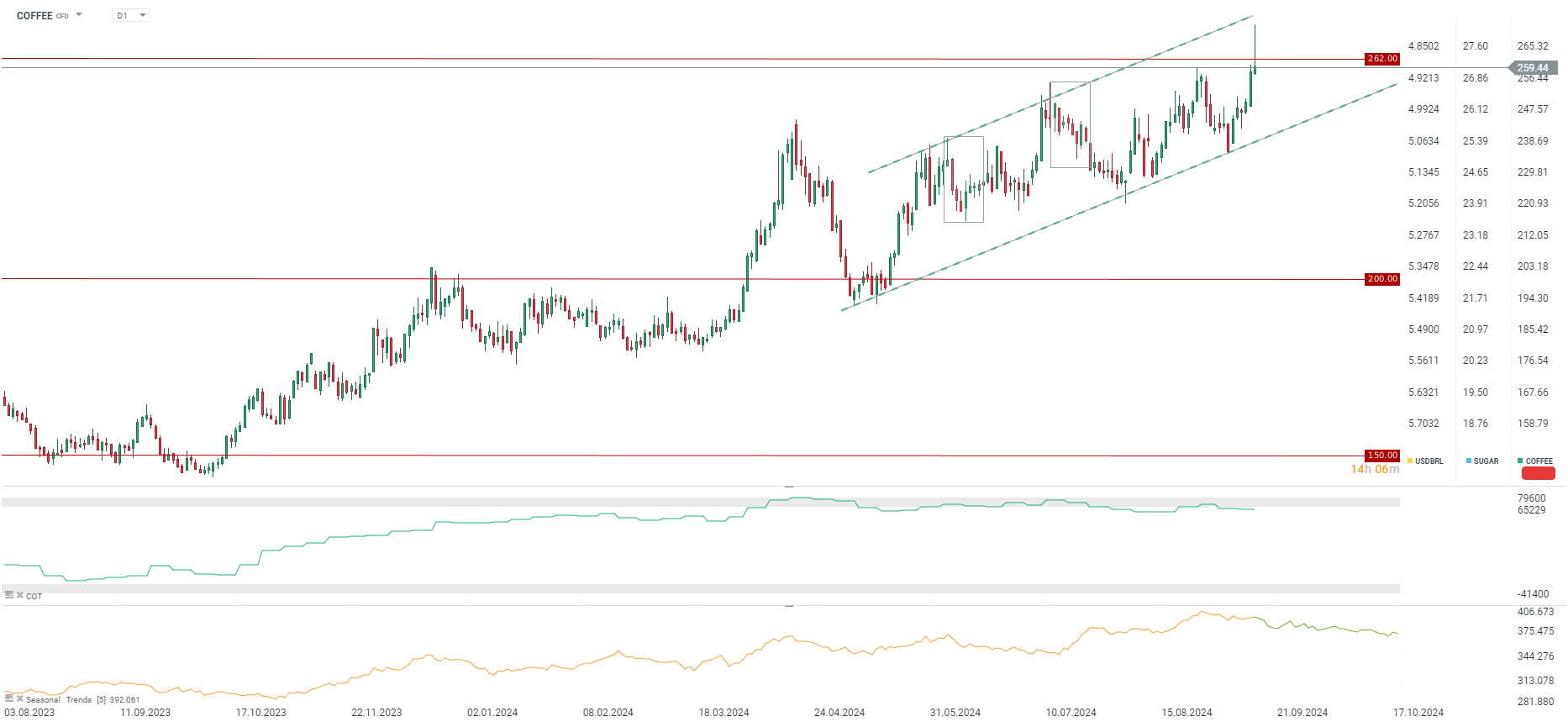
Coffee capped gains after a strong session earlier this week, but continued weather problems in Brazil and Vietnam could lead to a revision of crop forecasts for the 2024/2025 season. It may be that the sizable surplus forecast will be fully reduced. Source: xStation5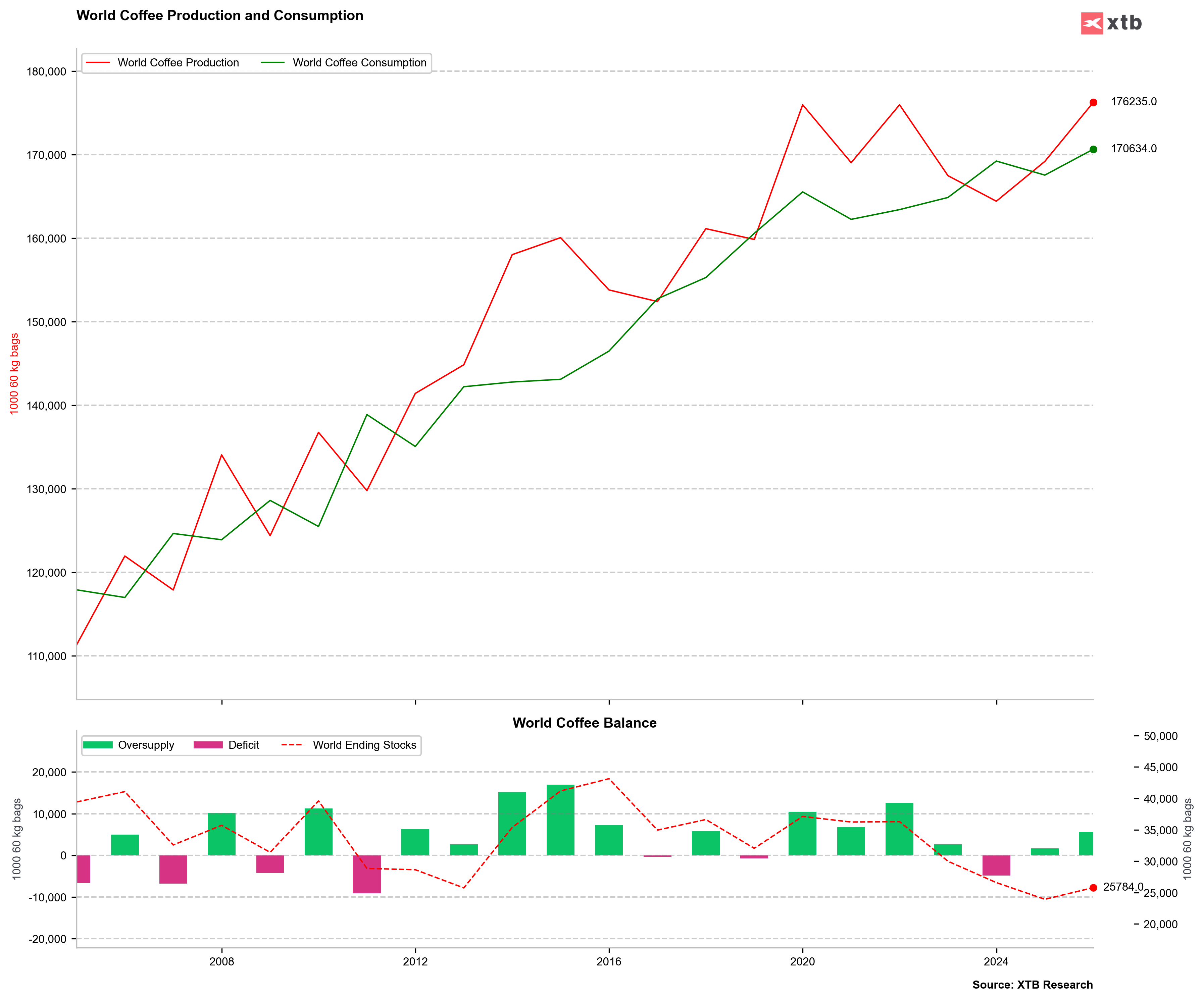
Currently, we are expected to have a sizable oversupply in the 2024/2025 season, due to the expectation of a sizable production rebound in Brazil. On the other hand, there is a good chance of a revision of these forecasts and also a reduction in the production outlook in Vietnam. Source: Bloomberg Finance LP, XTB
